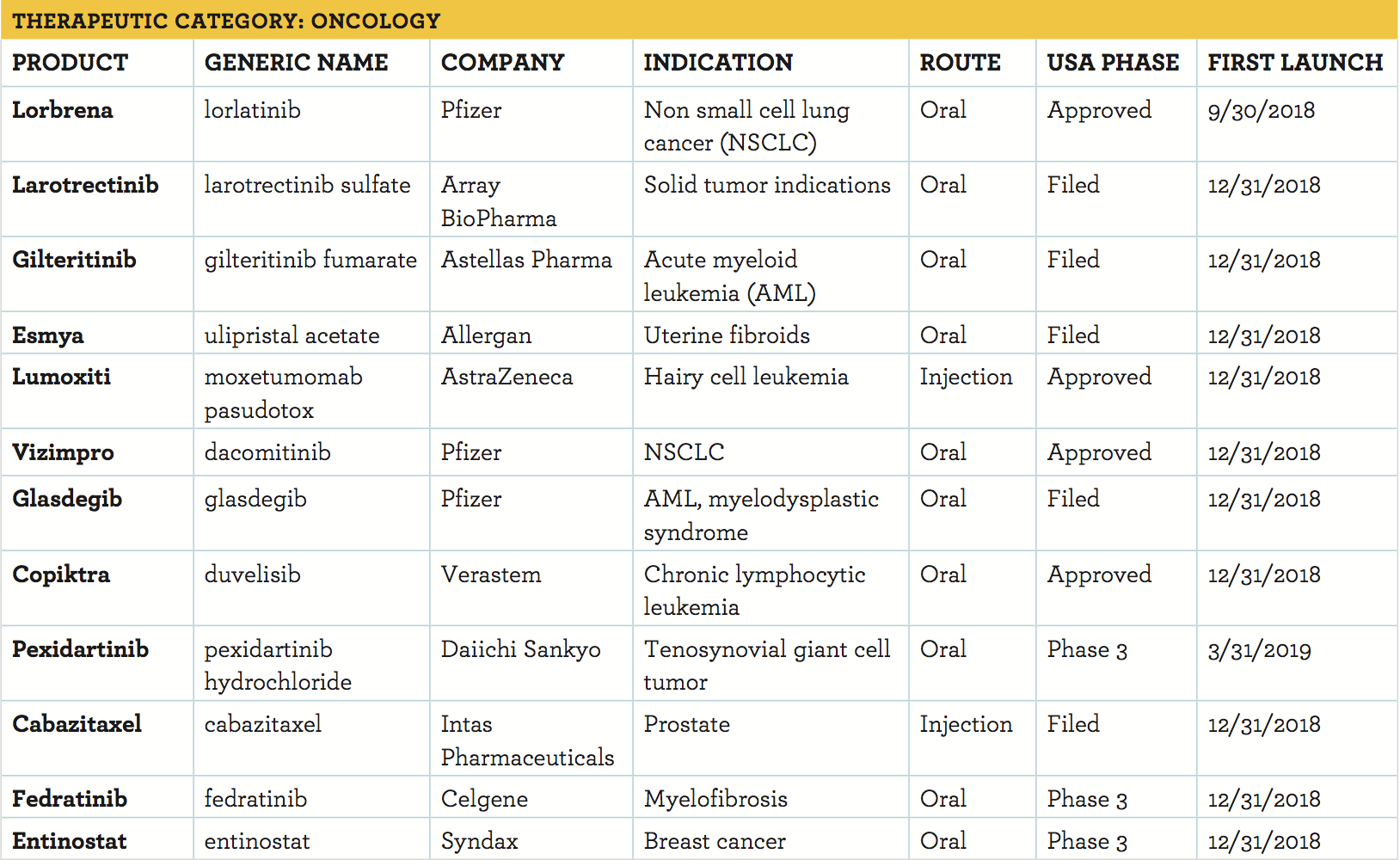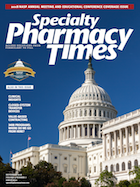Publication
Article
Specialty Pharmacy Times
Looking Down the Road: Success and Access
If a specialty pharmacy wants to participate in providing products and services to patients, they must prepare.
As we approach the end of 2018, analysts are predicting this year may break records for new drug approvals, especially in the specialty space. The Trump administration has been bullish on pushing for faster and more efficient approvals; therefore, the pipeline of specialty products is robust. Each product approval has a story and opportunity built around it. If a specialty pharmacy wants to participate in providing products and services to patients, they must prepare. Your approach to managing the complex environment of specialty products must be both strategic and tactical if you want to compete. It takes hard work and thoughtful preparation to develop a plan that assures the best possible patient outcome, and each product requires a unique strategy. That’s why we call it specialty.
Do Your Homework—Follow the Pipeline
There are several excellent sources of information that look ahead at pending approvals. Many of these are produced by leading pharmacy benefit managers (PBMs), payers, the FDA, and subscrip- tion services. Also, most of the national conferences carve out a presentation that covers the pipeline. Leverage these resources whenever possible. To put your organization’s best foot forward, it is important to do this type of planning. Below is a list of some of the potential approvals over the next several months.

Build Your Plan
From the list, it is highly likely that most of these specialty products will fall into either the open or limited distribution category. Although open distribution products create access to revenue opportunities, a specialty pharmacy may need to dig a little deeper with manufacturers to seek compensation for services and data in exchange for the value these pharmacies provide back to the manufacturers and the patients prescribed their drugs.
There are several reasons why a manufacturer may choose to distribute its product through a limited specialty pharmacy or network of pharmacies. Whatever those reasons are, your pharmacy must convince the manufacturer that your services meet the need of the product based on their selection criteria and understanding of their distribution methodology. Typically, the distribution plan is driven by several questions:
- Is the product oral, self-injectable, or infused?
- Are there special storage, handling, and administration requirements?
- Does the product come at a significantly higher cost?
- Is there a small target audience of patients (5000-100,000)?
- Are the patients typically treated in an institutional or ambulatory setting?
- Is there a risk evaluation and mitigation strategy (REMS) or patient registration program in place?
- Are there atypical reimbursement challenges?
- How can the standards of data collection and analysis be raised?
High-touch, focused pharmacy solutions have emerged that seek to maximize patient outcomes for specialty products. Specialty pharmacy offers a greater level of patient care and understanding to dial in on the right solution for complex challenges. Once your organization best understands the needs of the product and the patient, as well as the tactics of the manufacturer, you are ready to build your plan.
Getting Invited to the Party
The business of specialty pharmacy has evolved over the last several years into a $150-billion plus enterprise. Because of that growth, the rules of engagement have shifted and become more complex. A handful of PBM-owned specialty pharmacies dominate the landscape of limited-distribution products. If a specialty pharmacy wants to compete, it must have all of the elements in place to participate in the selection process. Successful specialty pharmacies invest in business development and work hard at having people in the market who tell their story. Having the relationships to be considered for distribution is equally critical. Our industry is blessed with several national meetings, to establish these relationships, such as the recent National Association of Specialty Pharmacy conference, which more than 1200 individuals and dozens of pharma organizations attended. Meeting the right decision-makers or networking with attendees to get to those folks is of utmost importance if you want to get invited to the party, better known as the request for proposal (RFP).
The Process of Selection
Once a pharma company has decided on its model and plan, the industry standard is to use the RFP process to document a company’s viability. While each product may have unique characteristics that determine viability, many of the essentials that will be covered in the RFP are below:
- Pricing and methodology
- Accreditation
- Quality: metrics, standard operating procedures
- Payer access
- General information
- Inventory management
- Clinical services
- Data capture and reporting
- Operations and reimbursement
- REMS
- Sales
- 24/7/365 service
It has been my experience with the emergence of more complex products that having the right resources to support clinical services for patients is most important. The cost of specialty products continues to escalate as we find great new therapies that often treat a smaller population for complex diseases. Therefore, reimbursement and access are equally important. The rules of engagement with a manufacturer and a payer on these products, like the diseases they treat, are becoming more complex.
We are seeing more value-based contracting in the market. Value-based contracting involves payment, or reimbursement, based on indicators of value, such as patient health outcomes, efficiency, and quality. This is distinct from volume-or fee-for-service—based contracting, which involves payment for every unit of service delivered, often without terms related to outcomes, quality, or cost per- formance. In the world of value-based contracting, the specialty pharmacy is an essential partner to the manufacturer in ensuring the patient receives the best possible clinical outcome in order for the product to be fully reimbursed.
Specialty pharmacies must have the right resources to provide services and have the tools in place to measure outcomes. Earlier this year, our elected and appointed leaders published American Patients First (APF), which is a plan for bringing down the high price of drugs and reducing out-of-pocket costs for the American consumer. Whatever the outcome of these initiatives, expect that they will have an impact on the decision-making process of distribution selection. I predict that APF will enhance access to specialty products as the value of services will be better recognized beyond just their price.
Getting in Best Position
Do your best to get in front of the decision-makers; create your case studies and win them over on the fact that what you do is best for the patient and their product. Many pharmacies subspecialize in in key therapeutic areas and are experts at providing services for products that treat specific disease states. Specialty pharmacists must strive to become the best at managing patients with their medications in those disease states. Access to recently launched products is awarded to pharmacies that have a more defined focus on disease- and product-specific services. Look to other health professionals in your market, as they often have a degree of influence over patients’ choice of a specialty pharmacy. Physicians and their support staff are very aware of the specialty pharmacies that offer comprehensive support services, therapeutic expertise, and access to a specific product. Having strong relationships with local physicians is a great asset, because they often provide feedback to the manufacturer’s representatives who share this up the chain with their decision makers.
Next Steps
As you review the pipeline, understand the profile of the product and the manufacturer. A manufacturer’s website is a great source of information to best understand both. This is big business and manufacturers must raise capital to bring these products to the market. In doing so, they post a great deal of information you can use to understand their product and plan of action. Look for presentations they may have posted digitally, as well as press releases and financial filings, including their annual reports. The information is there.
Opportunities are out there for those who prepare. The shift from traditional to specialty products is the future of our profession.
With the record number of pending and soon to be approved products, find those that you can do best with. Please continue to use Specialty Pharmacy Times® as a key resource to participate in the future. Also, check out the Specialty Pharmacy Times Industry Guide® site where you’ll find additional resources at www. specialtyrxaccess.com/strategic-planning.







